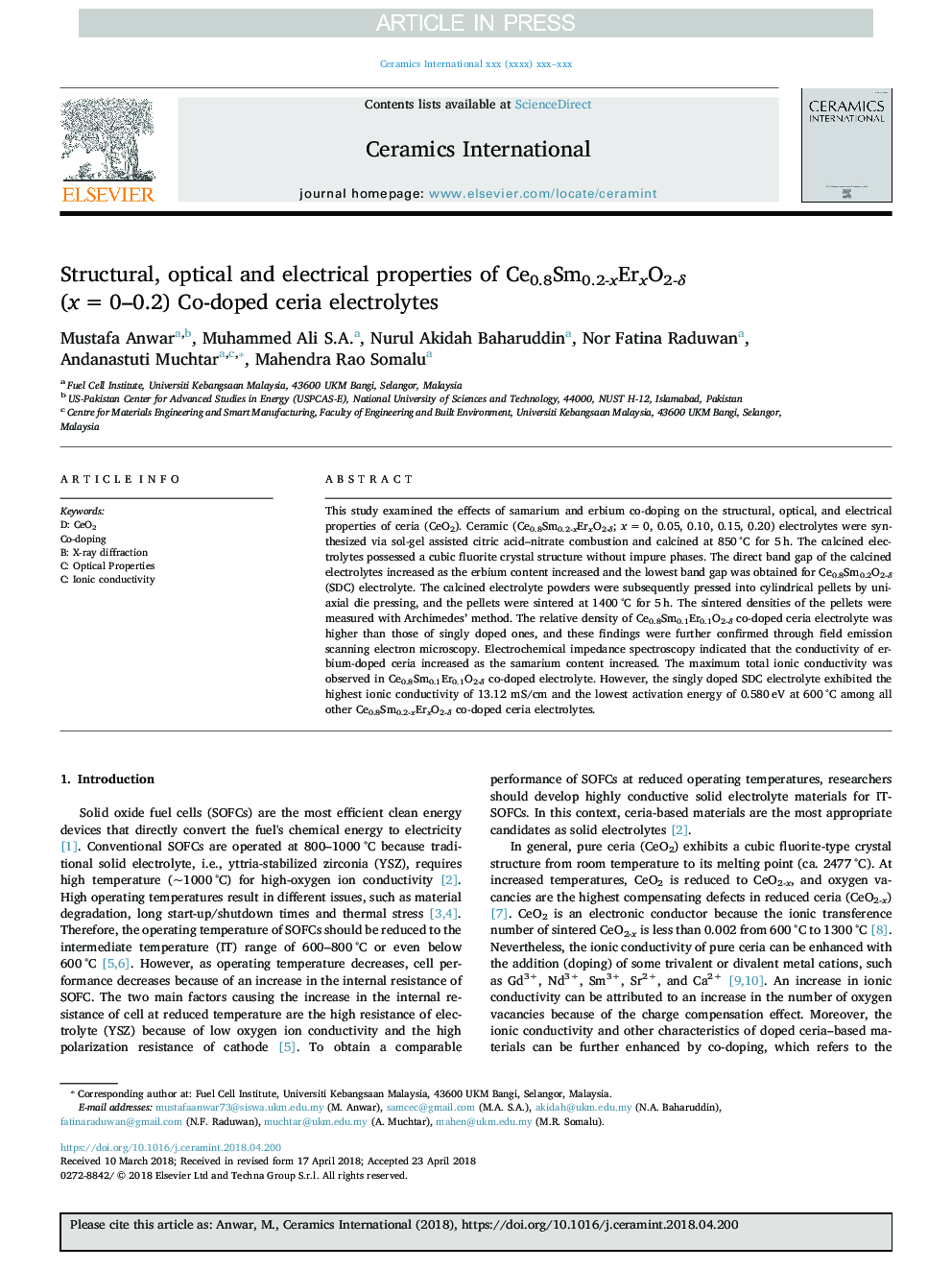| Article ID | Journal | Published Year | Pages | File Type |
|---|---|---|---|---|
| 7886359 | Ceramics International | 2018 | 10 Pages |
Abstract
This study examined the effects of samarium and erbium co-doping on the structural, optical, and electrical properties of ceria (CeO2). Ceramic (Ce0.8Sm0.2-xErxO2-δ; xâ¯=â¯0, 0.05, 0.10, 0.15, 0.20) electrolytes were synthesized via sol-gel assisted citric acid-nitrate combustion and calcined at 850â¯Â°C for 5â¯h. The calcined electrolytes possessed a cubic fluorite crystal structure without impure phases. The direct band gap of the calcined electrolytes increased as the erbium content increased and the lowest band gap was obtained for Ce0.8Sm0.2O2-δ (SDC) electrolyte. The calcined electrolyte powders were subsequently pressed into cylindrical pellets by uniaxial die pressing, and the pellets were sintered at 1400â¯Â°C for 5â¯h. The sintered densities of the pellets were measured with Archimedes' method. The relative density of Ce0.8Sm0.1Er0.1O2-δ co-doped ceria electrolyte was higher than those of singly doped ones, and these findings were further confirmed through field emission scanning electron microscopy. Electrochemical impedance spectroscopy indicated that the conductivity of erbium-doped ceria increased as the samarium content increased. The maximum total ionic conductivity was observed in Ce0.8Sm0.1Er0.1O2-δ co-doped electrolyte. However, the singly doped SDC electrolyte exhibited the highest ionic conductivity of 13.12 mS/cm and the lowest activation energy of 0.580â¯eV at 600â¯Â°C among all other Ce0.8Sm0.2-xErxO2-δ co-doped ceria electrolytes.
Keywords
Related Topics
Physical Sciences and Engineering
Materials Science
Ceramics and Composites
Authors
Mustafa Anwar, Muhammed Ali S.A., Nurul Akidah Baharuddin, Nor Fatina Raduwan, Andanastuti Muchtar, Mahendra Rao Somalu,
